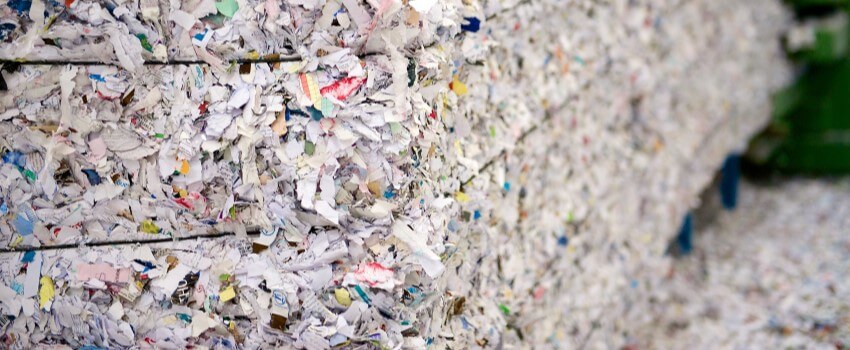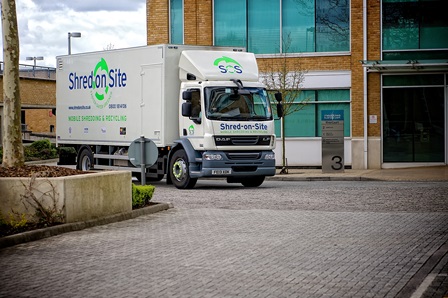What Happens To Your Outdated Records After It's Been Shredded
The disposal of outdated records through file shredding is a critical step in protecting sensitive information. It's essential to understand not just the process of file shredding but also the aftermath—what happens to these documents after they've been turned into confetti-sized pieces? Let’s look into the importance of file shredding in safeguarding privacy and contributing to environmental sustainability.
Safeguarding Information in a Digital Age
Shredding plays a pivotal role in protecting personal and corporate data from falling into the wrong hands, which could lead to identity theft, fraud, and other security breaches. Here's why shredding is indispensable:
- Protection Against Identity Theft
Identity theft is a prevalent issue, with individuals' personal information being a prime target for criminals. Shredding documents containing sensitive information—such as social security numbers, bank account details, and personal addresses—mitigates the risk of this information being misused by identity thieves. - Compliance with Legal Requirements
Various laws and regulations mandate the protection of personal data. For instance, personal data protection is governed by stringent laws and regulations, notably the General Data Protection Regulation (GDPR), supplemented by the Data Protection Act 2018. These frameworks mandate the secure handling and disposal of personal information to protect individuals' privacy. - Preserving Confidentiality
For businesses, protecting intellectual property, client information, and internal communications is paramount. Shredding ensures that confidential documents are destroyed in a manner that prevents competitors or unauthorized persons from accessing sensitive data. - Environmental Responsibility
Beyond security, the process of shredding and recycling documents supports environmental sustainability. By turning shredded paper into recycled products, we reduce the demand for virgin paper, conserve resources, and contribute to a circular economy. - Clutter Reduction and Efficiency
Regular shredding of unnecessary documents declutters workspaces and storage areas, promoting a more organised and efficient environment. This reduces the risk of accidentally disclosing sensitive information and facilitates easier navigation and access to important documents.
The Life Cycle of Shredded Documents
File shredding begins in the office with the secure collection of sensitive documents. These are then handed over to a data destruction company, which either shreds the documents on-site using mobile shredding trucks or transports them offsite for destruction. This step ensures that sensitive information is reduced to shreds that are impossible to reassemble, thus safeguarding against data breaches and identity theft.
After shredding, the journey of these documents doesn't end. The tiny pieces of paper are then prepared for recycling, transforming them into new products. Shredded documents are usually baled into large bundles and sent to paper processing plants. Here, they undergo a transformation process—mixed with water and chemicals to break down into pulp. After being cleansed of inks and possibly bleached, this pulp is screened to remove debris, pressed into sheets, and dried. The result is a fresh batch of recycled paper products, ranging from office paper to toilet paper, tissues, and other paper goods.
Environmental Impact and Sustainability
The environmental implications of shredding documents extend far beyond the simple act of destroying paper. When integrated with comprehensive recycling programs, shredding can profoundly impact sustainability efforts. Here's a closer look at the environmental benefits of shredding and recycling paper:
- Conservation of Resources
Shredding and recycling paper contribute significantly to the conservation of natural resources. Recycling one ton of paper saves approximately 17 trees, 7,000 gallons of water, 463 gallons of oil, and three cubic yards of landfill space. Trees are vital to our ecosystem, producing oxygen, improving air quality, and providing habitat for wildlife. Water and oil are finite resources, and their conservation is essential for sustainable development. - Reduced Greenhouse Gas Emissions
Recycling paper reduces greenhouse gas emissions associated with producing new paper. The process of recycling paper requires less energy than producing paper from virgin wood pulp, which in turn reduces carbon dioxide emissions, a primary greenhouse gas. Moreover, by diverting paper from landfills, where it decomposes and produces methane—a potent greenhouse gas—shredding and recycling contribute to mitigating climate change. - Prevention of Deforestation
The demand for paper and paper products contributes to deforestation, which has dire consequences for the environment, including loss of biodiversity, disruption of water cycles, and increased carbon emissions. By recycling shredded paper, we reduce the need for virgin paper, thereby decreasing the pressure on forests and helping to preserve biodiversity. - Promotion of a Circular Economy
Shredding and recycling paper are key components of a circular economy, where resources are reused and recycled for as long as possible. This approach contrasts with the traditional linear economy of "take, make, dispose," promoting waste reduction and the efficient use of resources. Through the recycling of shredded documents, paper fibres can be reused multiple times, extending the lifecycle of the resource and reducing the need for new materials. - Waste Management and Reduction
Effective waste management is crucial for environmental sustainability. Shredding and recycling paper help manage waste more efficiently by reducing the volume of waste sent to landfills. This conserves landfill space and minimises the environmental impact associated with waste disposal, including leachate production and the release of greenhouse gases.
Choosing the Right Shredding and Recycling Vendor
Selecting a vendor for file shredding and recycling impacts data security and environmental sustainability. It's crucial to opt for a vendor that adheres to stringent security measures to ensure the confidentiality of shredded documents until they are recycled. Furthermore, understanding a vendor's recycling process can provide insights into their commitment to environmental conservation. Reputable vendors typically hold certifications and follow best practices that align with sustainable recycling methods.
File shredding serves a dual purpose: protecting sensitive information and contributing to environmental conservation. By understanding the life cycle of shredded documents—from secure destruction to recycling into new products—we gain a deeper appreciation for the role of file shredding in modern data protection and sustainability efforts. As we continue to generate and dispose of paper records, embracing file shredding and recycling practices becomes imperative for organisations committed to data security and environmental responsibility.
Get in touch with us for secure file shredding services.







